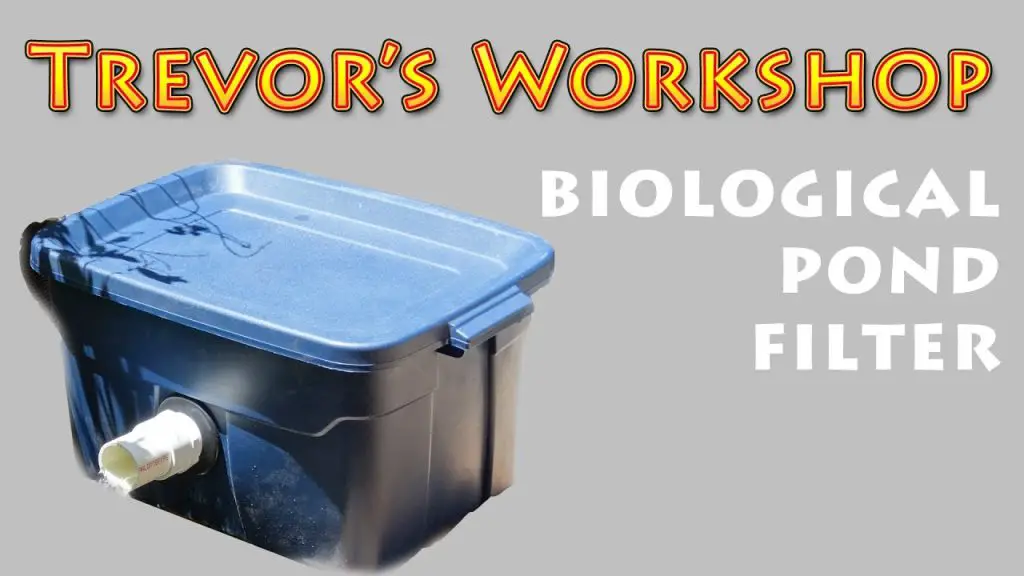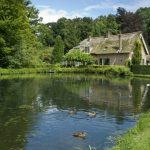Building a pond bio filter is a great way to enhance the water quality of your pond while creating a healthy environment for aquatic life. A pond bio filter helps in removing impurities and maintaining the ecological balance within your pond. In this comprehensive guide, we will walk you through the steps to build your very own pond bio filter.

Credit: www.instructables.com
Materials Needed
Before you begin constructing your pond bio filter, gather the following materials:
- Large plastic container or barrel
- Pump
- PVC pipes and fittings
- Pond filter media (bioballs, lava rocks, filter foam)
- Silicone sealant
- Marker
- Drill
- Waterproof sealant
- Utility knife
- Measuring tape
- Water hose
Step-by-Step Guide
Step 1: Selecting A Container
Choose a large plastic container or barrel that can hold the necessary filter media and accommodate the size of your pond pump. Ensure that the container is durable and can withstand outdoor conditions.
Step 2: Marking And Cutting
Using a marker, outline the areas where you will cut holes for the water inlet and outlet. Use a drill to create these openings. Be precise in your measurements to ensure a proper fit for the PVC pipes.
Step 3: Installing Pvc Pipes
Insert the PVC pipes through the holes you drilled, connecting them to the water pump. The pipes will serve as the inlet and outlet for water flow within the bio filter.
Step 4: Adding Filter Media
Fill the container with pond filter media such as bioballs, lava rocks, or filter foam. These materials will provide surface area for beneficial bacteria to grow and help in the filtration process.
Step 5: Sealing The Bio Filter
Use silicone sealant to secure the PVC pipes in place and seal any gaps or openings in the container. This will prevent water from leaking and ensure proper filtration.
Step 6: Connecting The Pump
Attach the pond pump to the PVC pipes inside the bio filter. Make sure the pump is securely connected and positioned to facilitate water circulation through the filter media.
Step 7: Testing The Bio Filter
Fill the bio filter with water and turn on the pump to test its functionality. Check for any leaks or irregularities in water flow. Adjust the pump settings as needed for optimal filtration.
Maintenance Tips
Regular maintenance is essential to keep your pond bio filter operating efficiently. Here are some maintenance tips to follow:
- Check and clean the filter media regularly to prevent clogging and maintain proper water flow.
- Monitor the pump and ensure it is functioning correctly. Replace the pump if needed.
- Inspect the bio filter for any signs of damage or wear and tear. Repair or replace any damaged parts promptly.
- Test the water quality of your pond periodically to ensure the bio filter is effectively removing impurities.
- Keep the area around the bio filter clean and free of debris to prevent blockages and maintain optimal filtration.
Benefits of a Pond Bio Filter
Building a pond bio filter offers numerous benefits for your pond ecosystem:
- Improves water quality by removing excess nutrients and pollutants.
- Creates a healthy environment for fish and aquatic plants to thrive.
- Reduces algae growth and maintains a balanced ecosystem.
- Enhances the overall aesthetics of your pond by keeping the water clear and clean.
- Promotes sustainability and ecological balance within your pond environment.

Credit: www.youtube.com
Conclusion
Constructing a pond bio filter is a rewarding project that can significantly benefit the health and beauty of your pond. By following the steps outlined in this guide and performing regular maintenance, you can create a thriving aquatic ecosystem that is both visually appealing and environmentally sustainable.





